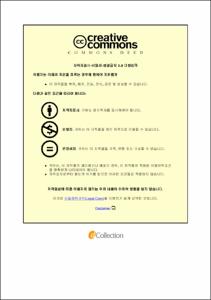사용 후 태양광 셀로부터 Ultrasonic wave 활용 실리콘 및 유가금속 회수
- Abstract
- Due to the recent rapid industrial development, renewable energy is attracting attention due to the issue of resource depletion and environmental pollution. As interest in new and renewable energy increases, the use of representative eco-friendly energy solar energy is also increasing. As the usage of solar power increases, the amount of waste solar modules with a life expectancy of about 20 to 30 years is expected to increase. According to a report to the IEA, about 76 million tons of waste solar modules are expected to be generated by 2050.
The solar module is composed of Si, Ag, Cu, Pb, and Al, of which Pb is expected to cause a lot of environmental pollution when the solar module is buried or incinerated after using it as a harmful component. In this regard, Europe has made it mandatory to collect and recycle waste solar panels since 2012, and in Korea, the EPR system has been implemented since 2023, designating solar modules as essential recycling items, and the need for solar module recycling technology is increasing. Particularly, although Pb included in solar cells among solar modules has a great influence on environmental pollution, technology for recovering solar cells is still insufficient.
Conventionally, a stirring process based on acid leaching is used as a process for recycling solar cells. The stirring process makes it difficult to remove impurities from the surface of a photovoltaic cell, so it is judged that a method to remove impurities more finely is needed.
This research recovered silicon from solar cells after use using an acid solution and ultrasonic cavitation effect and recovered valuable metals through precipitation, pH control, and reduction reaction from leachate after recovering silicon. Silicon recovery process was experimented with acid solution concentration, reaction temperature, reaction time, and ultrasonic strength as variables, and finally, the purity of silicon recovered was 99.58 % and the recovery rate was 99.94 %, and the purity of silver recovered was 99.72 % and 92.3 %. In addition, Cu and Pb were recovered together and the integrated purity was detected as 96.09 %, and the recovery rate was calculated as Cu 94.63 % and Pb 91.04 %.
- Issued Date
- 2022
- Awarded Date
- 2022. 8
- Type
- Dissertation
- Publisher
- 부경대학교
- Affiliation
- 부경대학교 대학원
- Department
- 대학원 마린융합디자인공학과
- Advisor
- 왕제필
- Table Of Contents
- Ⅰ. 서론 1
1.1 연구 배경 1
Ⅱ. 이론적 배경 2
2.1 태양전지의 특징 및 분류 2
2.1.1 태양전지의 특징 2
2.1.2 태양전지의 분류 3
2.1.3 태양광 모듈의 구성 4
2.1.4 태양광 재활용 기술 동향 6
2.2 산침출 9
2.1.1 산침출 정의 9
2.1.2 산침출 메커니즘 9
2.3 초음파 11
2.3.1 초음파의 정의 및 cavitation 효과 11
2.4 침전법 13
2.5 연구의 목적 14
Ⅲ. 실험 재료 및 방법 15
3.1 실험 재료 및 장비 15
3.2 실험 방법 18
3.2.1 산 침출 20
3.2.2 침전반응 및 환원반응 21
3.2.3 pH 조절 및 환원반응 24
Ⅳ. 실험 결과 및 고찰 26
4.1 사용 후 태양광 셀로부터 초음파 활용 실리콘 회수 실험 26
4.1.1 산 용액 농도에 따른 실리콘의 순도 및 회수율 26
4.1.2 반응 온도에 따른 실리콘의 순도 및 회수율 30
4.1.3 반응 시간에 따른 실리콘의 순도 및 회수율 33
4.1.4 초음파 세기에 따른 실리콘의 순도 및 회수율 36
4.2 침전반응 및 환원반응 활용 은 회수 39
4.3 Ag 회수 후 여액으로부터 Cu 및 Pb 회수 44
Ⅴ. 결론 47
Ⅵ. 참고문헌 48
- Degree
- Master
- Appears in Collections:
- 대학원 > 마린융합디자인공학과
- Files in This Item:
-
-
Download
 사용 후 태양광 셀로부터 Ultrasonic wave 활용 실리콘 및 유가금속 회수.pdf
기타 데이터 / 1.08 MB / Adobe PDF
사용 후 태양광 셀로부터 Ultrasonic wave 활용 실리콘 및 유가금속 회수.pdf
기타 데이터 / 1.08 MB / Adobe PDF
-
Items in Repository are protected by copyright, with all rights reserved, unless otherwise indicated.